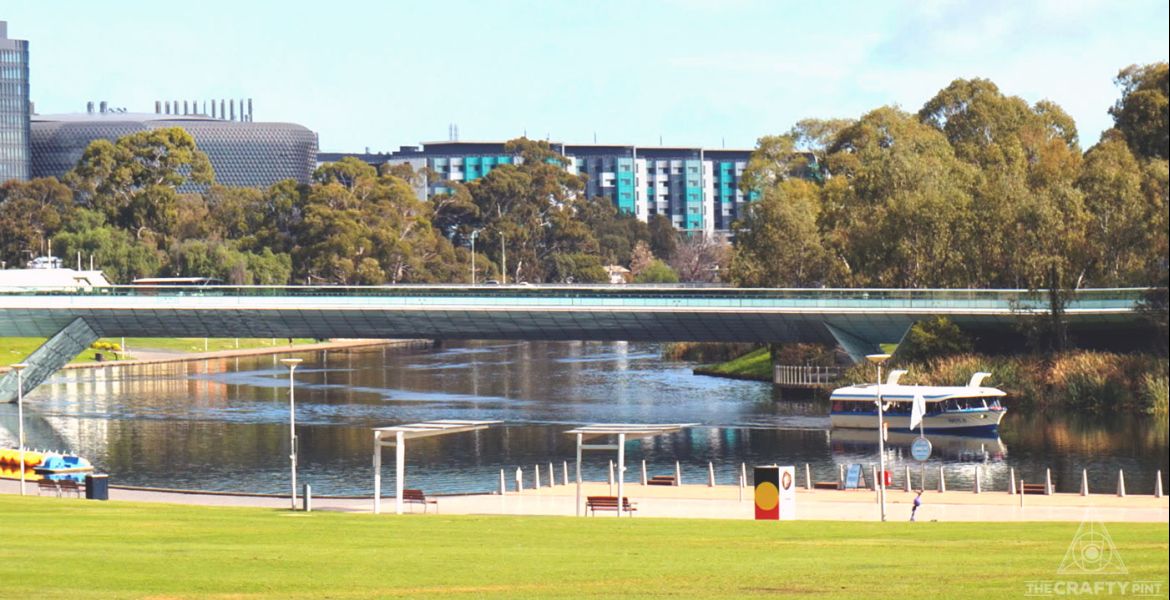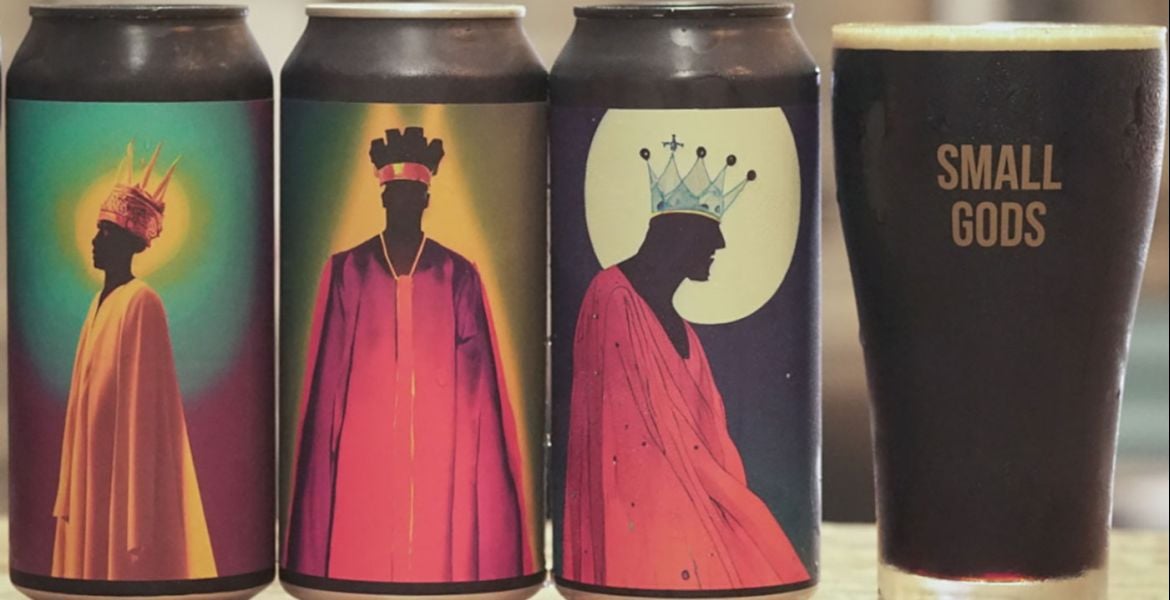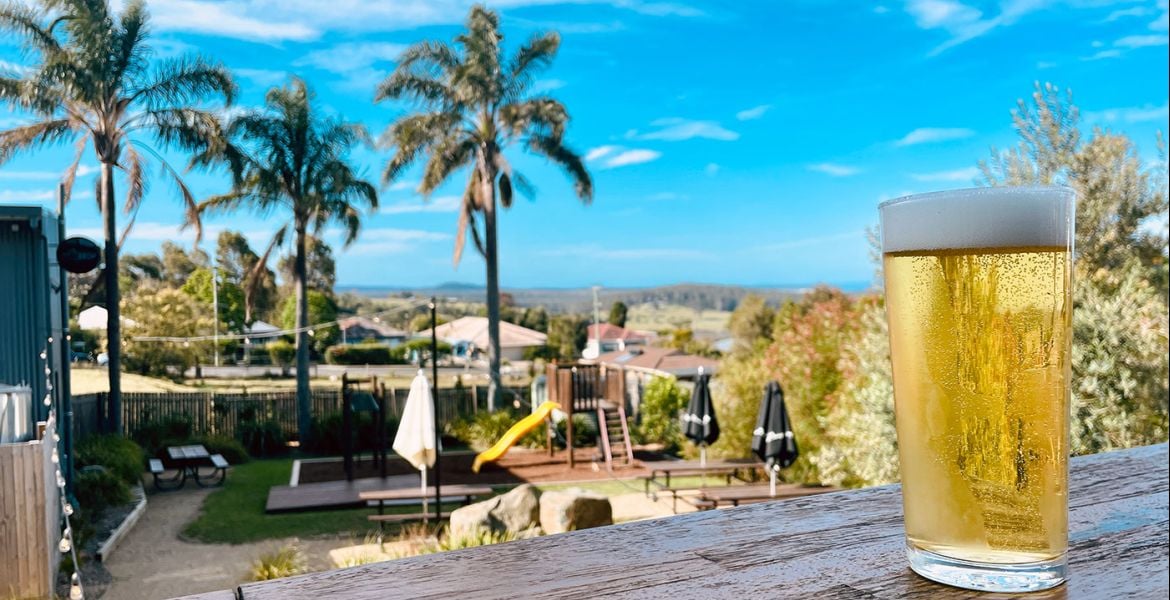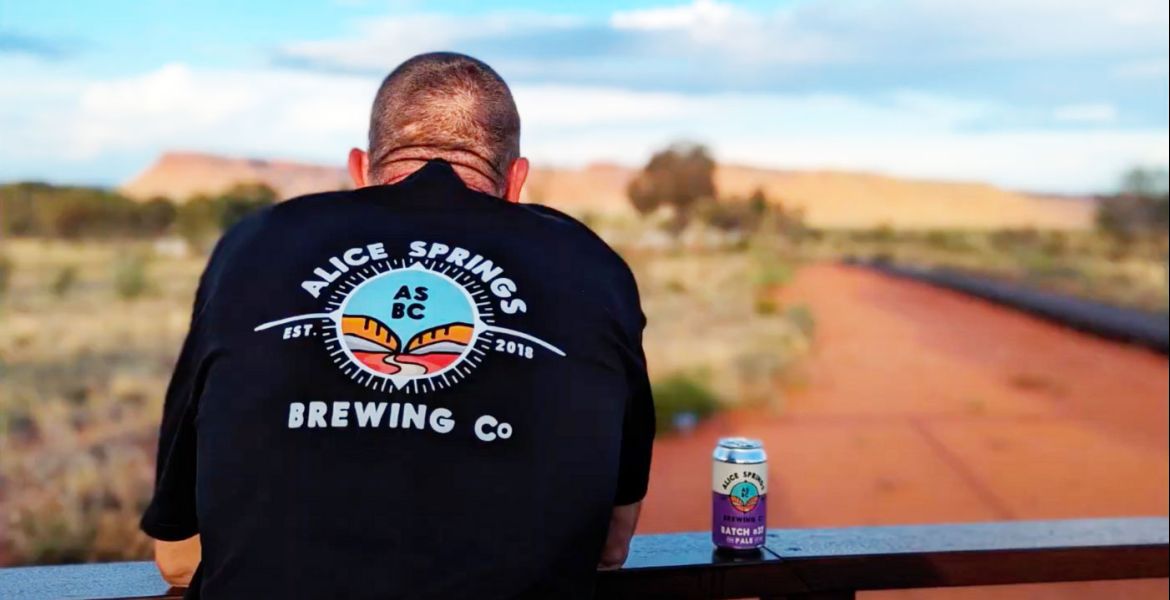From the street you can see the cross on the apex, the unmistakable religious symbol signalling a place of worship.
When you come here it doesn’t matter who you are or where you’re from. There are people from all walks of life. Women. Men. Young. Old. The higher power here – the one that calls you for a weekly pilgrimage or in a time of need – isn’t interested in demographics.
Step inside and you are amongst strangers but welcomed completely. This place has a spirit, but it is not a church. Once, it was a home for parishioners of the Anglican Church of Saint George. Now it is the house of Good George.
Hemmed in by an assortment of industrial businesses in Frankton, a suburb marginally west of the Hamilton CBD, Good George is an all encompassing brewery, bar and dining hall. In other words, a very nice brewpub.
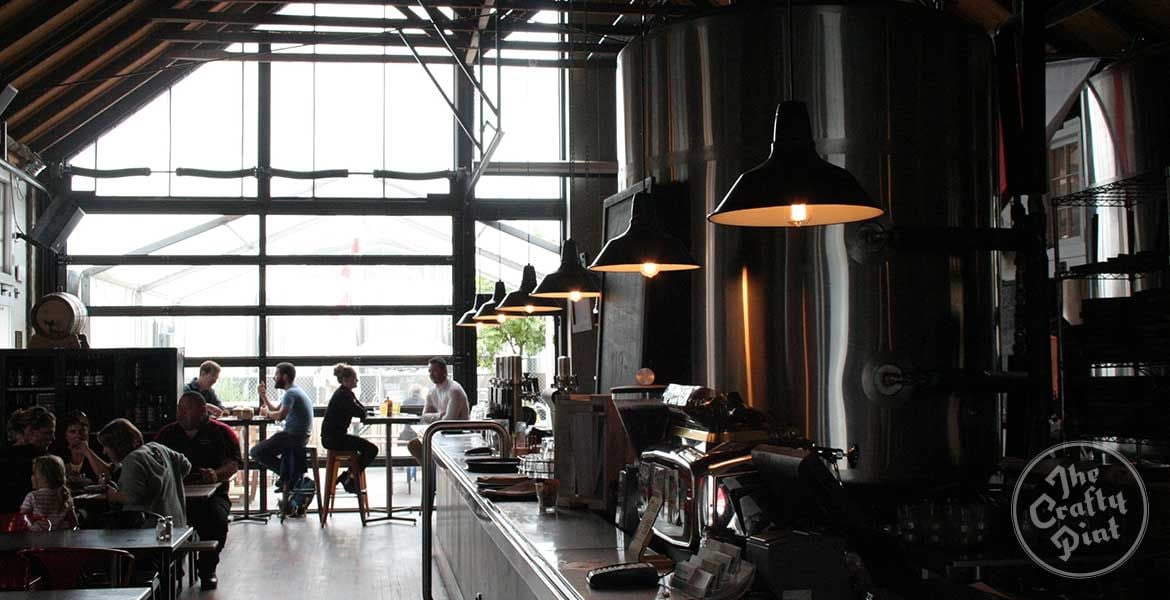
Until the venue opened in September 2013, Hamilton didn’t have a significant independent craft brewery it could call its own. Considering it is the fourth largest city in a country with a flourishing beer scene, that might seem slightly odd. But it is an indication of how recent the rise of local beer has been in many parts of New Zealand. If bigger brother Auckland, less than 100 kilometres away but getting closer by the week thanks to urban sprawl, has taken all this time to generate a genuinely exciting beer scene, then what chance Hamilton, a place dependent on the surrounding rural economy?
This region, the Waikato, is mainly known for its dairy farms, the equine industry, a university and high performance sportspeople; its river and stables have a seemingly endless capacity to produce medal-winning Olympic rowers and equestrian riders, adding some credence to the longstanding joke that New Zealanders only win medals in events where they can sit down.
Ask the regular person on the street and they will tell you Waikato Draught is the beer around here. It was truly local once but its longtime owners, Lion Breweries, have produced it in Auckland for almost three decades. There were, and still are, a handful of very small and part time local brewers – such as Shunters Yard in Matangi and its gypsy brewing guests – though nothing that could give Waikato Draught a run for its money in the parochial stakes. It is into that void Good George has stepped, with its affable name, friendly branding and a range of beer that is almost impossible not to enjoy. In a short space of time they have built a loyal following and something resembling a mini craft beer empire.
“We’ve grown quite a bit,” says brewer Brent Edwards in typically understated manner.
“Where our brewery is now was a driveway. The windows were boarded up, there was a homeless person living in a car and it was pretty rundown. It hadn’t been used in a good year and a half.
“At the start we only had three fermenters. Then we got two 50 hec [hectolitre] fermenters, then two more; now we’re up to ten 50 hec fermenters and we’ve got three 100 hecs on the way. We’ve gone to brewing three times a day, though not every day.”
This current configuration has them producing somewhere in the vicinity of one million litres of beer and cider annually.
“And,” adds Brent, “we’ve only just started.
“When we first opened, we looked at just selling through the bar and restaurant, but the owners also have a bunch of other bars in town so they put the beer on there. Word spread to other bars around town, then places further afield started asking. Now you can get it throughout the North Island all the way to the bottom of the South.”
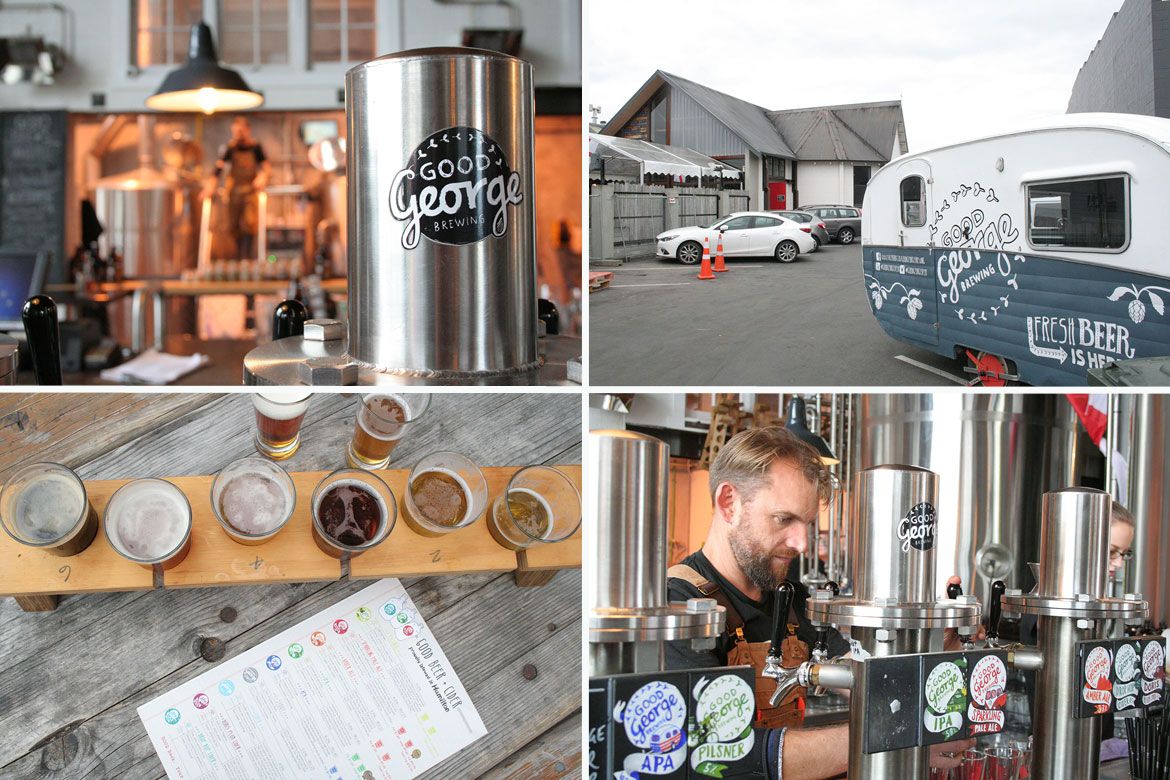
The core range of beers they’re putting out tend towards more familiar styles, but it’s nonetheless a colourful little collection of gems. At the gentler end you have a New World pilsner, the sparkling pale ale – which in practice is a hoppy golden ale with a dash of wheat – and a wonderful low alcohol amber ale. Hop fiends will find much to enjoy in the IPA and APA, both dominated by American hops, while the stout provides a fine counterpoint to the rest, particularly when offered on nitro at the brewery. More creativity comes to play by way of the regular seasonal releases, collaborations and a brewer’s reserve series; at the time of writing that was a trio of rye, coffee and black IPAs.
Although cans are very de rigueur and Good George does have a canning line, it only tends to be used for collaborations or special runs for events and festivals. Otherwise, you will find their beer packaged in custom designed almost-one-litre squealers which offer a significant point of difference on retail shelves.
Prompted by the success of the brewpub, the Good George brand has been spread further by sister venues Little George and Good Neighbour, the former a beer bar in the Hamilton CBD and the latter a sprawling gastropub situated, quite unconventionally, in the middle of a car park in the city’s northern suburb of Rototuna and which has its own microbrewery. It’s worth saying again that all of this has happened inside three years, at the beginning of which Brent had never brewed a commercial beer before.
“When I started our head brewer was Kelly Ryan [now at Wellington’s Fork & Brewer] and I was a bar manager. I’ve always been a homebrewer, so I just washed kegs, did deliveries and worked my way into the brewery. I love this job and I’m always learning.”
Brent’s rapid rise within his role is a direct result of the growth of Good George, which in turn is a reflection of an upheaval in New Zealand’s beer landscape. To get a little perspective on how much things have changed, there are few better places to head than New Zealand’s oldest independent and continuously operated brewery.
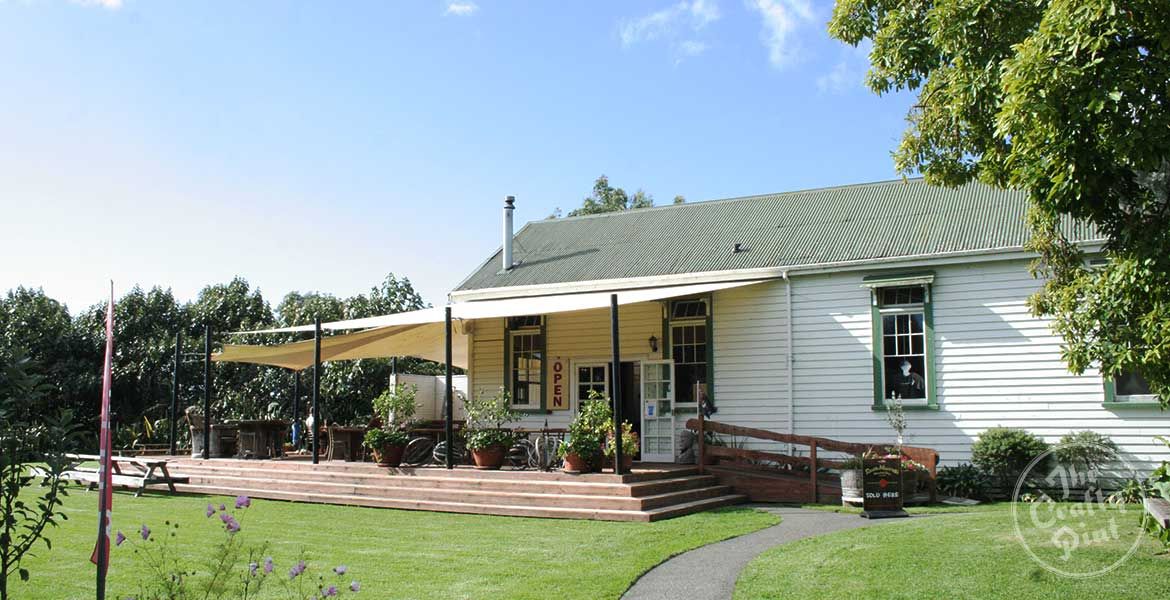
To the south of the Waikato, the Taranaki region is synonymous with the mountain which carries its name (pictured at top) and around which its residents operate in a circuitous nature. Most days the peak is obscured beneath a white and grey blanket, some sort of magnetic effect pulling clouds in close from the Tasman Sea. But when this imagined polarity is reversed and the clouds disperse, the mountain dominates every panorama.
New Plymouth is the region’s capital city, occupying the space where the western side of the mountain slopes towards the coast. For a main centre it could hardly be more out of the way, but having possession of the only deep water port on New Zealand’s west coast makes it commercially advantageous for the key local industries: agriculture, oil and gas. This region has a vast coastline, much of it rugged and windswept. Owing to the shape of the land, the coast collects 180 degrees of ocean swell and the local Surf Highway 45 comes with a local year round guarantee of good waves. In contrast to the golden sands found in the north of the island, the sand here is volcanic and black; brooding in winter, painfully hot to touch in summer.
In addition to being surrounded by the sea on the west and south, on its northern and eastern edges Taranaki is bordered by thick forests, gorges and national parks. The lay of this land means the population lives in an extensive network of small settlements; one running through the centre and the other along the southern coast. Follow either of these routes to where they meet north of New Plymouth and the population tails away further in a succession of increasingly small villages. One of the last in the line is the tiny settlement of Urenui where there is little of interest to passers by except, perhaps, for the slightly foreboding sign advising it is the last petrol stop for 100 kilometres of often immensely windy and slip-ridden roads. It is certainly an unlikely place to find a brewery, let alone one that’s in its 27th year of operation.
It was started in 1989 by Mike Johnson and it produced a single beer: Mike’s Mild Ale. Thus, despite officially being called White Cliffs Brewing Company, it has generally tended to be known as Mike’s. People would turn up at this shed, ostensibly in the middle of nowhere, and pick up takeaway beer in brown plastic PET bottles. The brewery, made from repurposed dairy equipment, slowly grew into an institution without ever really growing much at all.
Mike ran the brewery until 2003 before selling the business to a New Plymouth couple who added a lager to the range before the business was sold again. Its current owner, Ron Trigg, bought it as part of a family business nearly ten years ago.
Ron is a burly man, possessing the kind of strong frame which it becomes clear is a necessity to run a business of this nature in this location. When he speaks, which he often does at length, it is with an accent formed in Zimbabwe by way of South Africa. And with the history of this brewery, both before and during his tenure, there is no shortage of topics to talk about.
“Before we bought it, the brewery had actually never been called Mike’s,” says Ron.
“It was called White Cliffs Brewing, because of the white cliffs down the road. Early on we nearly made a mistake as we were ready to rebrand. We went to a show in Auckland – that would have been a good nine years ago – and it was our first public engagement so we were trying to get a feel for things. People were saying, ‘Your organic lager and organic ale are pretty cool,’ but we spoke to about two thousand people and not one person knew the name White Cliffs. Not one person, even though it was really prominent on the label. I thought that was really weird so we prodded them and they’d ask where we were from and the conversation would go:
'Oh, you’re not that little brewery next to the main road?'
“Yeah, that’s us.”
'Isn’t that Mike’s brewery?'
“No, it’s White Cliffs.”
'But that’s Mike’s Mild Ale. That’s why I know it. My dad used to buy this stuff. We’ve been there – it’s the one with the little shed in the paddock.'"
The redesign was immediately called off and they went back to the drawing board, compiling a list of some 300 names preferable to either Mike’s or White Cliffs. The top ten options were sent to close confidants for a vote, but not before Ron re-added the name Mike’s as a last minute contender. It romped home, with only two of fifty people voting against. Thus, after nearly two decades, Mike’s was officially branded as mike’s – with a small "m".
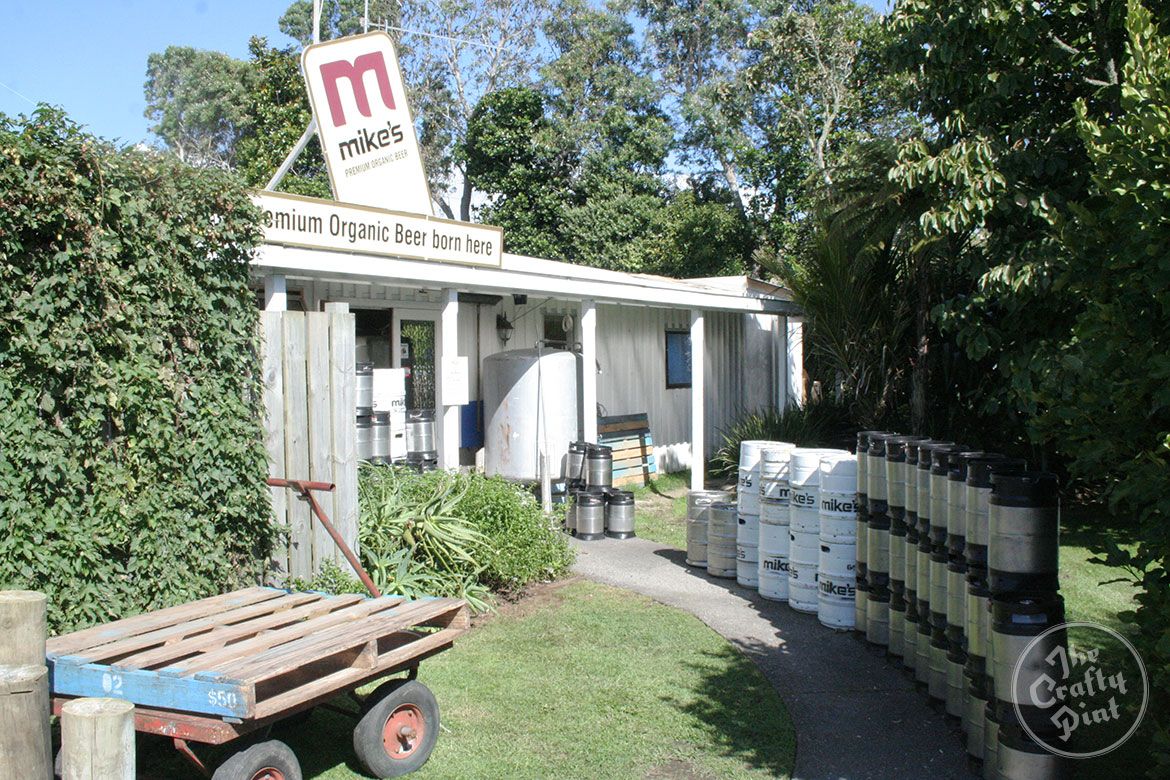
Under Ron’s direction, it continued with the organic production principles which the brewery had followed under the previous owners.
“I was really hot on the whole organic thing to start with,” says Ron. “It was one of my driving reasons for buying the business.
“For me, philosophically, it all came from the soil. I love growing stuff and I’ve been a farmer for years, doing both intensive and non intensive farming, and you can grow produce without using chemicals. That’s only happened in the last 50 to 60 years.
"Plants have evolved over aeons to become what they are, so you don’t need to use that shit. That’s my ethos. Beer, unfortunately, is a really hard product to sell that message.
“At one point we had nine organic beers, all certified, audited and done right, and it just didn’t work. We chugged along and sold beer and never made money. We made losses every year.”
It forced some soul searching and rethinking of recipes at the brewery, resulting in the release of mike’s first non-organic beers. Ron and the family expected the worst. They anticipated a backlash from their loyal organic customers. They put contingency plans in place ahead of a predicted slump in sales. And nothing they feared came to pass.
“It was exactly the opposite of what we predicted,” says Ron. “The new beers sold really well, the organic beers spiked immediately too and we thought, ‘What’s going on here?’
“Again, we did research just by asking people and the responses we got, anecdotally from beer geek customers, was that they avoided the organic beers because they thought there would be something wrong with them. They thought there’d been some compromise with ingredients so it wasn’t worth trying. Then they tried the non-organic ones and thought, ‘Shit, this is actually pretty good. I might try these other ones’. I was thinking, ‘What the hell kind of psyche is that?’, but it appears to be what happened.”
So began an almost total reversal of everything the Triggs had started out trying to achieve. The organic range was gradually reduced to just three beers; pilsner, lager and the mild ale. Now it is down to just the mild, held onto by virtue of being a point of difference and a sentimental favourite. It is, says Ron, still the original beer with the same recipe and it is organic, but they’re not persisting with the accreditation.
“I’ve been really frustrated over the years, being the miserable bastard waving the organic flag and trying really hard to try and ensure everyone knew what the certification meant, but eventually you just get worn down. There are other breweries out there that just slap the organic label on a beer but the ingredients aren’t organic – the hops aren’t organic, the process isn’t organic, nothing’s organic. It might have one organic hop in the beer but the rest is bullshit, yet they call it organic.
“I can’t be this crusader any longer because it costs us. We pay dearly for our ingredients, the certification is really expensive, the auditing is really expensive, and I just thought, ‘We’ve got to make some money’. It’s been a long hard road to get here.”
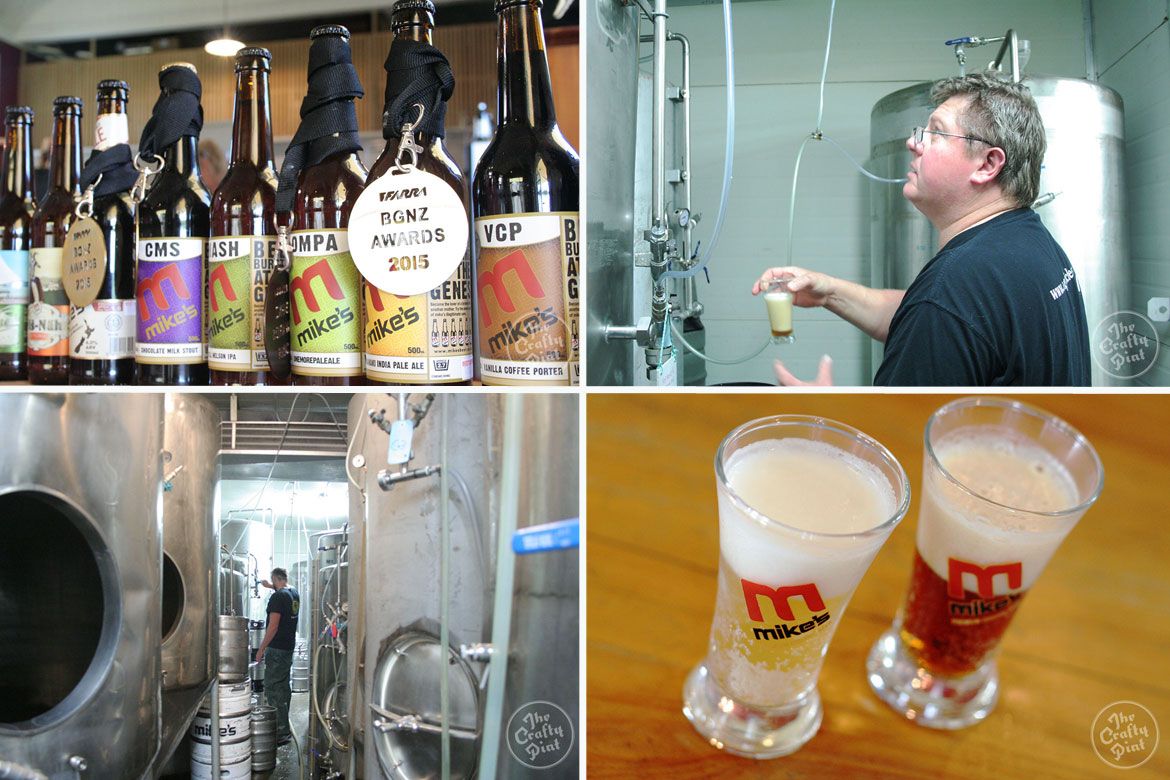
So where on the road is mike’s now? The brewery is in its 27th year and, despite toying with the idea of moving to a larger facility in New Plymouth a couple of years ago, it is still in the same spot it has always been, in a shed outside Urenui. But it now welcomes visitors into immaculately kept grounds and a gorgeous cellar door while the brewery itself has increased its output considerably, albeit remaining a textbook definition of ramshackle. And the beers are excellent across the board.
The range is now too numerous to address individually, but a return of seven medals and a trophy at the 2015 Brewer’s Guild of New Zealand Awards says much about the overall quality being produced at the hands of brewer Jesse Sigurdsson. Highlights include the wryly named Onemorepaleale and two IPAs – Taranaki and Full Nelson – which are bold but very contrasting, the annual imperial whiskey porter which has become something of a collector’s item, a smooth and luscious chocolate milk stout that may not even be their best sweet beer when there is the exquisite vanilla coffee porter to contend with and, of course, the mild – labelled mike’s Organic Ale – which is a timeless favourite.
mike’s is now well recognised and well respected in beer circles, but they still have to fight hard to have their presence felt, particularly in their home market.
“We’ve always sold our beer in Wellington,” says Ron, “but it’s always been too hard in Taranaki to go through the whole thing with venues of, ‘Yes we know it’s different and yes, it’s more expensive, and yes, you’ve got a tap contract’ – it’s been the same old thing for years. Wellington was just so much more receptive.
“But Wellington five years ago didn’t have any breweries – Tuatara up the Kapiti Coast was the closest. Now there are about 15 breweries or brewing companies there so we have to consider that. Our mission is to increase Taranaki sales and we have been growing, but we should have beer everywhere here.”
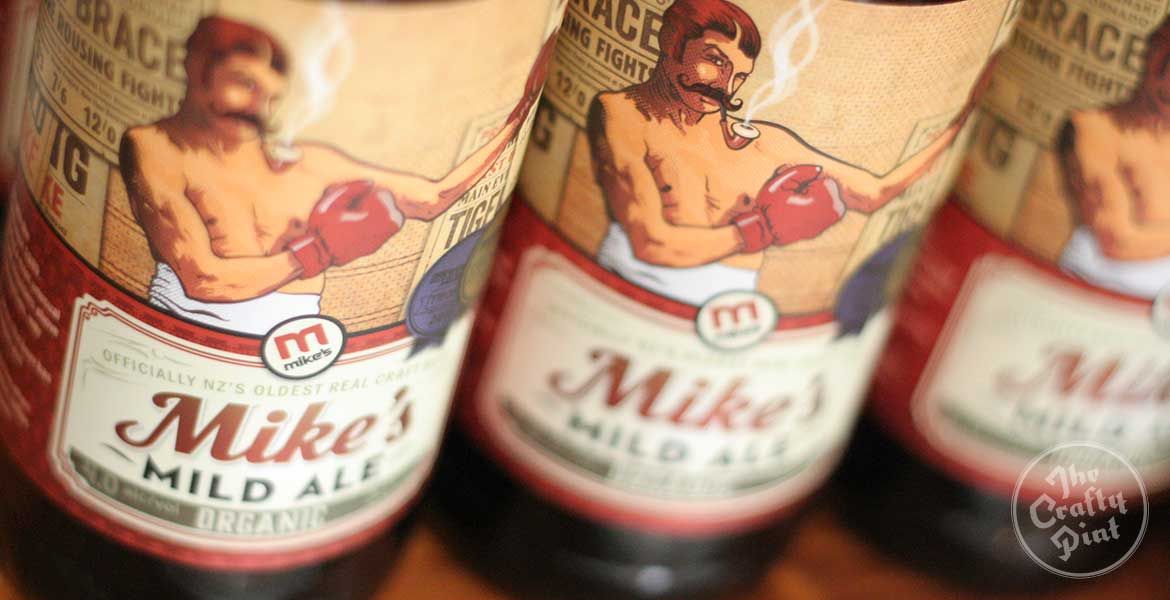
Coinciding with the brewery’s 25th birthday, there was a nice bookend to the quarter century milestone when they went to Wellington for a 25 tap takeover and took Mike Johnson along for the ride.
Says Ron: “We’d walk into a bar and I’d introduce everyone to original Mike and they’d do a little curtsy and say, ‘Oh, it’s so nice to meet you!’. There was this real respect and Mike was initially a bit awkward with the whole thing, but by the end of the weekend he’d grown into the role and he’d become this ambassador from another era.
“While we were there I said to him, ‘I’ve got to say this: I always thought you’d be a boring bastard’, and he said, ‘What made you think that?’ I said, ‘Well, how the hell, for 14 years, did it not occur to you that you could brew another beer? Didn’t you get bored?’”
The answer was as simple as it seems ridiculous: the ingredients were too hard to come by.
“DB and Lion collectively owned half the malting works,” says Ron. “They owned everything, so you couldn’t get the malt. To get his dark malt for the mild he’d buy regular malt and run it through the range cooker – just put it in the oven and roast it until it was black. There was smoke all over the place and he burnt out two stoves from doing it in the house, one roasting pan at a time, just watching until it started to smoke. If he was having a few beers while doing it, sometimes it would catch fire and he’d have to get it outside pretty quick. But that’s how he did it.”
That beer, recipe more or less unchanged, currently holds the Brewer's Guild trophy for being New Zealand’s best British style ale.
Shortly before the 25th birthday, Ron had stumbled upon Mike’s original home brew kit in the garage so had coaxed him back to the brewery to work with Jesse on another beer. And so it was that, after quarter of a century, Mike Johnson finally released his second commercial beer and companion to the mild ale: a four percent ordinary English bitter.
Postscript: Shortly before this feature was due to be published, mike’s announced that its trading company, White Cliffs Organic Brewery Limited, had been put into liquidation. We followed up with Ron to clarify the implications for the business.
These are, essentially, that a new company, mike's Holdings Limited (trading as mike's Beer), has been set up by Ron and his son Dylan and the previous additional shareholders having exited the business. Mike's Holdings is in the process of buying back stock and other assets from the liquidators but it is otherwise business as usual, with new stock being brewed and mike's tasting room cafe trading as normal.
About the author: Nick Oscilowski lives on the South Coast of New South Wales and writes about beer. He has nothing to complain about.
You can read his feature on the beer and breweries of the Coromandel Peninsula here. Look out for more tales from NZ to come...
And, if you're a Crafty Cabal member, you've got til Friday (July 15) to enter our Beervana all season pass competition. Check your member's area...







